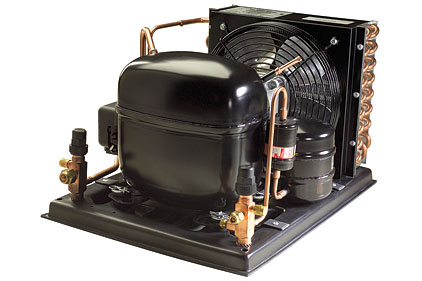A SCENARIO
Here is one common scenario where a compressor may appear to be defective when in fact it is not: If a compressor has overheated and opened its internal overload, it will shut down and not run. If a technician arrives on the job when the compressor is still hot and performs a resistance check on it, he will find the resistance of one or more windings to be infinite. He may interpret this to be a permanent open winding and decide that the compressor needs to be replaced. However, if the compressor was allowed to cool down and its internal overload reset, the technician would find its winding(s) not permanently open. He would then proceed to diagnose why the compressor’s internal overload opened and find the true cause of the problem. It may still be the result of a defective compressor but at least all of the other possible causes were ruled out first.A TESTIMONY
I can personally attest to this mistake. Early in my career I was called out to troubleshoot an ice machine. When I arrived on the job, the machine was not making any ice and everything seemed to be running normally except the compressor. I checked if voltage was applied to the compressor and it was. I then checked to see if it was drawing current and it was not. I then proceeded to de-energize the compressor, remove its electrical leads, and perform a resistance check on its windings. Sure enough I found both of the windings open (or so I thought). So, being a good technician, I notified the customer of the problem and quoted a price to replace the compressor. They needed ice so they approved the repair.I went to the supply house, picked up a new compressor, returned to the job and proceeded to replace the compressor. Once the new compressor was installed I started it up; it seemed to be running fine. I had the customer sign my work order and I quickly left the job. I did not wait for the ice machine to make a batch of ice as I should have.
A few hours later I received a call from my office telling me the ice machine was still not working. When I arrived back at the job the compressor again was not running. I went through the same procedure and found the compressor windings open again. Now I had a problem: Could it be the replacement compressor failed that quickly or was there something else wrong? I called my office for help.
At the time I was working for my father’s refrigeration service in New York City, so I had a good technical advisor to call on. He first asked me if I checked the compressor’s run and start capacitors and its start relay. Of course I had not. When I checked these components I found an open run capacitor. I changed the run capacitor and let the compressor cool down. It started up and I waited until two batches of ice were made and left the job. When I returned to the shop that day I rechecked the old compressor and guess what? Its windings were not open.
The moral to this story: If a compressor has an internal overload and is hot (too hot to touch) allow the compressor to cool down and retest it before deciding it needs to be replaced.
Publication date:08/01/2011








